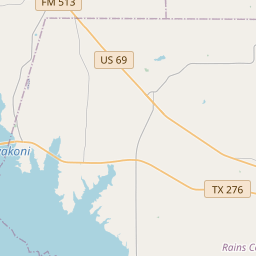Smyrna Union Church
Historical marker location:






This house of worship is the site of the old school house in which, on Sept. 2, 1902, Farmers Educational and Cooperative Union of America (National Farmers Union) established its first local union. The stated purpose was "To secure equity, establish justice and apply the Golden Rule."
The ten men who founded "Farmers Union" were residents of this area. The organization which they here established has become known and respected throughout the agricultural world. This tablet is erected to honor their names and memory.
Jesse Adams, W. T. Cochran, Tom Donaldson, Newt Gresham, J. B. Morris, T. J. Pound, O. H. Rhodes, Dr. Lee Seamster, W. S. Sisk, and J. S. Turner; presented by James G. Patton, President, National Farmers Union, Denver, Colorado
As one of the most visible programs of the Texas Historical Commission (THC), historical markers commemorate diverse topics in Texas history, including: the history and architecture of houses, commercial and public buildings, religious congregations, and military sites; events that changed the course of local and state history; and individuals who have made lasting contributions to the state, community organizations, and businesses.
The Johnson Space Center, located in Houston, played a crucial role in the development of the U.S. space program. It was here that NASA trained its astronauts and mission control teams, and it continues to be an important center for space research and exploration today.
The first settlers in Rains County arrived in the early 1850s, primarily from the southern United States. They were drawn to the fertile land and abundant water sources, such as the Sabine River and its tributaries. Agriculture quickly became the backbone of the county's economy, with cotton, corn, and livestock playing major roles.
The construction of the Texas and New Orleans Railroad in the late 1880s bolstered the county's growth, as it provided an important transportation link to nearby towns and markets. The railroad brought prosperity and new opportunities, leading to the establishment of the county seat, Emory. The town was named after Emory Rains and became a hub of commerce, education, and social activities in the region.
Despite the challenges posed by the Great Depression and the decline of agriculture in the mid-20th century, Rains County continued to thrive with the development of recreational areas and the growth of tourism. Lake Tawakoni, one of the largest lakes in Texas, was completed in 1960, which drew visitors and outdoor enthusiasts to the area. Today, Rains County remains a close-knit community, focused on preserving its history while embracing the opportunities of the modern era.
Rains County Timeline
This timeline provides a concise overview of the key events in the history of Rains County, Texas.
- 1870 - Rains County was established on June 9, 1870, named after Emory Rains, a Texas state legislator.
- 1871 - The first county officials were elected and the county seat was established in the city of Emory.
- 1873 - The first courthouse was built in Emory.
- 1878 - The Texas and Pacific Railway extended a line into Rains County, boosting economic growth.
- 1880 - The population of Rains County reached 3,901.
- 1892 - The second courthouse was constructed in Emory.
- 1913 - A fire destroyed the second courthouse, prompting the construction of the third courthouse.
- 1930s - The Great Depression brought economic struggles to Rains County.
- 1970s - The population of Rains County began to decline.
- 2001 - Lake Tawakoni State Park was established, providing recreational opportunities for residents and visitors.
- 2010s - The population of Rains County started to grow again, with increased interest in rural living and lakefront properties.